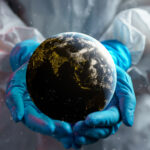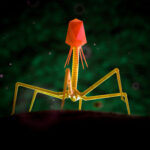Abstracts: Halloween Genes, Dinosaur Brains, Zombie Bacteria, and More
• Scientists get into the Halloween spirit with more than just creative costumes. In fact, a group of researchers identified and named a suite of fly genes known as ‘Halloween genes,’ earning them a Nobel Prize in 1995. (Science)

• The world’s largest marine park will extend 600,000 square miles — encompassing more than 12 percent of the Southern Ocean. Initiated by a commission of 24 countries and the European Union, the Ross Sea marine park, home to more than 10,000 species, will be protected from commercial fishing for the next 35 years. (Business Insider)
• Once upon a time, a dinosaur toppled over and was preserved upside-down in sediment. Today, an unusual brown pebble provides insight into that dinosaur’s fossilized brain tissue. (Yes, this story is as strange as it sounds.) (Science)
• “Zombie” bacteria linger — alive but sedated — beneath the permafrost, and warming temperatures could release them from their frozen lair. This means that diseases like anthrax may become more prevalent in the years to come. (Scientific American)
• To better understand the effects of the so-called “sugar pill,” scientists identify the brain’s placebo “sweet spot” to aid pain relief. These findings could help researchers design more effective drug treatments to target chronic pain, as well as predict which participants in a study will respond to the placebo. (Science Daily)
• That troublesome winter snow may prove to have economic benefits if scientists refine the process of collecting and repurposing it as a cooling agent during the summer — reducing electricity consumption and lowering greenhouse gas emissions. (Popular Science)
• A roundup of October’s most striking science photos includes an undersea mass spawning, a swath of more than 300,000 galaxies, psychedelic crystal swirls, and more. (Nature)
• When it comes to the art of flight, nature undoubtedly has us beat. Some birds, like the common swift, spend most of their lives airborne. In fact, scientists say this species remains in flight for 10 months out of the year. (Christian Science Monitor)
• And finally, Apple’s new MacBook Pro is pretty darn snazzy, but its most impressive attribute may be the Touch ID. Gone are the days of forgotten passwords and unprotected online payments, as we usher in the new era of fingerprint scanning technology. (Wired)










